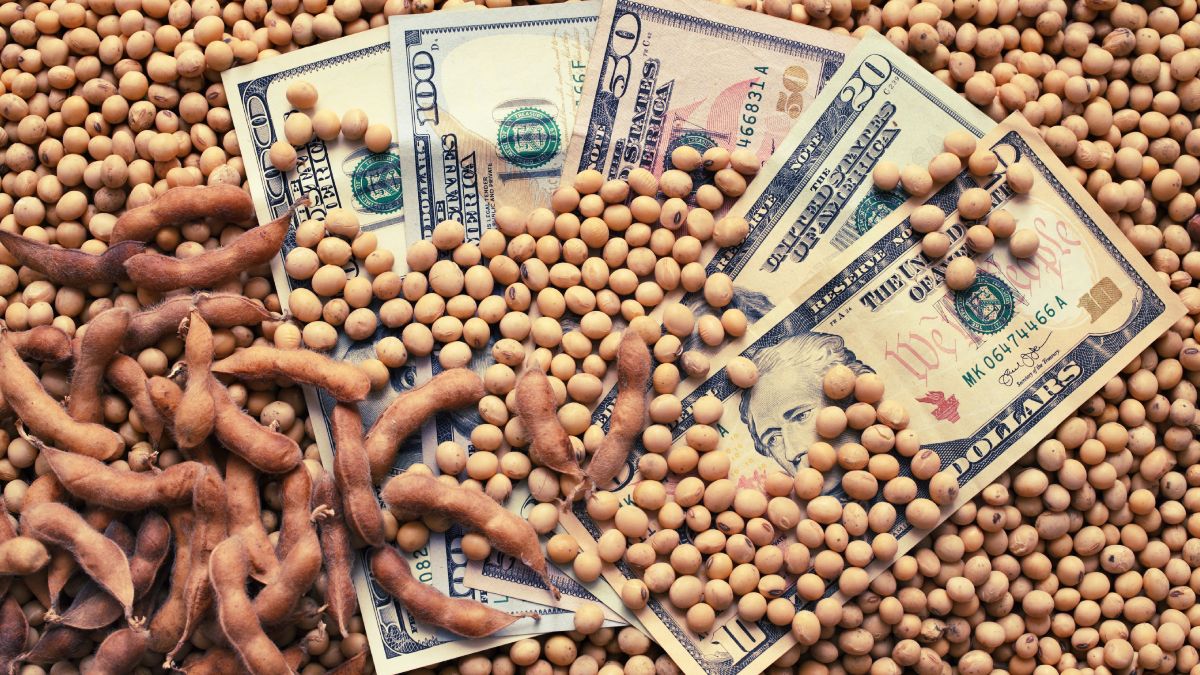A report of Rubén Ciani for the Institute for Social, Economic and Citizen Policy Research (ISEPCI) points out that the greater income of foreign exchange from the countryside constitutes one of the main factors that encourages the Government’s expectations of a recomposition of reserves in 2024 and estimates, based on projections, that settlement will fall this year compared to expectations.
And the work indicates that “the grain production in Argentina comes from 2023 affected by extreme droughtone of the largest in historical records, which reduced the volume produced by 35% and the value of its exports by 45%.” The accounts for 2024 outlined at least a recovery of reserves of US$20,000 million that did not They could be exported in 2023, but they point out that, as the present agricultural season, that figure tends to be reduced to values close to half.
The last projections for the value of exports for 2024 (technically based on the 2023/24 season) They are around US$34,000 million, compared to US$23,000 million in 2023 and US$41 million in 2022. Thus, a recovery of around US$12 billion is only expected. “The causes are lower production than expected and falling prices,” they point out.
Reserves and the evolution of the harvest
The report states that ““The growth of reserves, which at the end of 2023 barely exceeded US$20 billion, is fundamental”not only for the intended dollarization of the Government, but also for compliance with the agreements with the International Monetary Fund (IMF), the containment of inflation, the payment of interest and amortization of the debt, etc. ”
The author explains that the link between agricultural exports and level of reserves, as a factor to avoid a new devaluation, associates the flow of the former with the level of the latter. And, in this sense, he highlights that “the agricultural impact on production and currencies is not limited to the value of the sector’s exports, but also to the times in which it liquidates the dollars from its sales to the monetary authority (BCRA). abroad”.
Consequently, he maintains that It is essential to keep the scarce available reserves in order until the exports of the “field” are liquidated., generally giving the month of April as the deadline, when the thick harvest is liquidated. However, he warns that there are two additional factors that are key:
- he producer sales paceconsidering the financial capacity and productive scale that the sector has to manage its sales and foreign exchange earnings,
- the financial movements of exporterswhich can anticipate foreign currency inflows in a stable exchange rate scheme, with scheduled increases in the price of the dollar.
The numbers estimate a lower level of income this year
“In terms of grain production, The current season in Argentina takes place in a context of recovery with respect to the 2022/23 seasonas already mentioned, but which was also affected by dry weather during the month of January, when the so-called coarse harvest crops (soybeans, corn, sorghum) are grown,” highlights the report published by the ISEPCI.
The estimated numbers are no less than 10 million tons below the 2021/22 cycle season, prior to the drought and the projected volumes in February varied within the range of 130/123 million tons. Likewise, they indicate that the export prices of Argentine grains (measured in FOB terms) register an interannual decrease of around 70 dollars/ton, from an average of around 400 dollars/ton in 2023 to a projection for 2024 of 330 dls/ton.
“The Price variation in the coming months will be influenced by productive changes in South America (April / May), specifically in Brazil and Argentina, which together make up the majority portion of the world’s exportable supply for soybeans and corn,” they point out. And they anticipate that, subsequently, The market will move largely following the weather conditions in the United States, a country that harvests in September and provides the other portion of the soybean and corn supply. The evolution of Chicago futures in recent months shows a downward trend for prices.
dollar-soybean.jpg
A reference value, called “Dolar Exporter”.
Depositphotos
And, in this context, they point out that “the commercialization of grains determines the income of foreign currency to the country during the year“. They explain that, simplifying the operation, the circuit begins when the producers sell (when they set the price) to the exporters, the latter deposit the foreign currency into the BCRA to pay for the operation.
“The experience of the last two years project a certain uncertainty in relation to sales movements by producers. The question is whether marketing will be governed by the seasonality associated with harvest times or will be linked to pressure from producers to devalue,” they anticipate.
However, they clarify that an alternative situation would be that exporters enter foreign currency in advance, encouraged by the conditions of the exchange and financial market, with positive rates in dollars within the framework of a scheduled devaluation of 2% monthly, with the aim of obtaining an additional financial benefit. “In this case, foreign exchange earnings will not be associated with the producers’ sales, but will be maintained, according to devaluation expectations,” they detail.
According to the work, in the current 2023/24 season, “The data analyzed are not conclusive to determine the parameters that will govern the inflow of foreign currency in the coming months, but they leave some conditions to continue the issue“. Although CIARA-CEC data, foreign exchange income in November/January (wheat and barley) shows a low percentage of the total (11% versus 17% in 2021/22), in terms of value it amounts to au $3,800 million, exceeding the sales of producers by 1,000 million, a situation that reflects an anticipated income of foreign currency.
Source: Ambito




